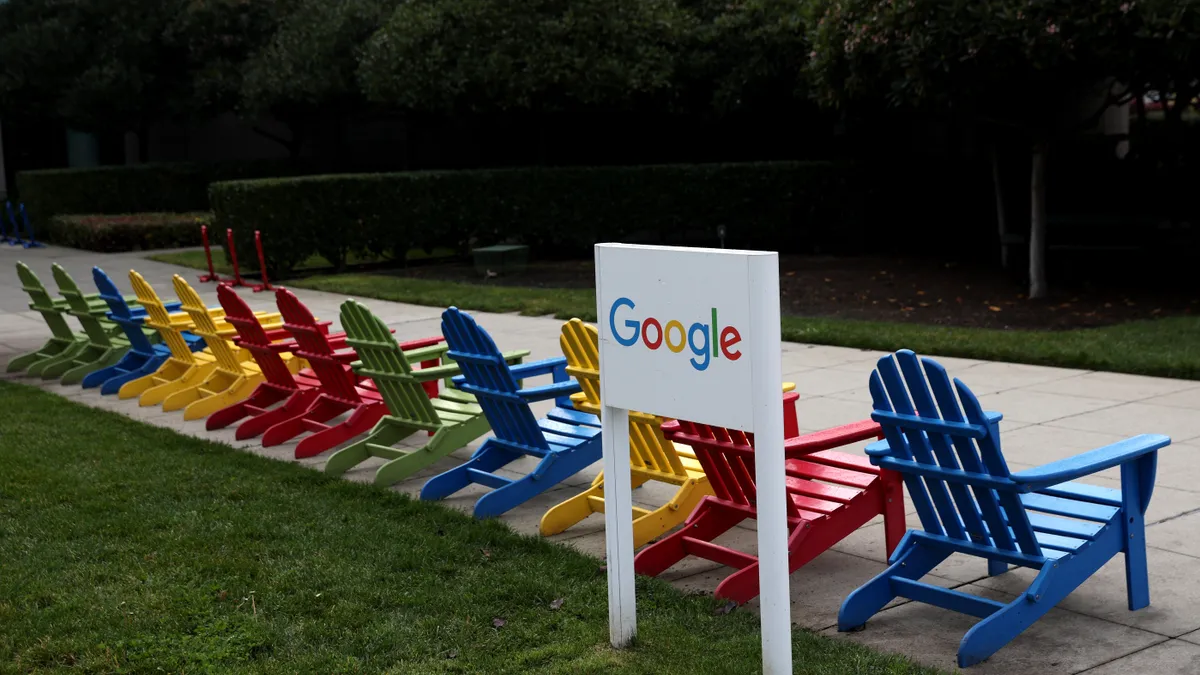Dive Brief:
- Alphabet’s revenue grew just 1% in the fourth quarter to reach $76 billion, capping off a tough year for the Google owner, according to an earnings statement.
- The company’s key advertising segment dropped 3.6% versus the year-ago period to $59 billion. Revenues for Search and YouTube both experienced declines, with the latter down 8% to $7.96 billion.
- Google enacted cost-cutting measures in Q4, including a steep round of layoffs in line with tech industry peers. Looking forward, executives pointed to artificial intelligence (AI) advancements and YouTube Shorts as areas of promise for the advertising business.
Dive Insight:
Harsher search advertising pullbacks and continued weakness in YouTube weighed on Google in Q4, a window that includes a holiday shopping season that usually heralds a barrage of marketing activity. The search giant joins others in the tech category in reporting a rough close to 2022 that saw brands in belt-tightening mode due to a volatile economy and inflationary pressure.
On a call discussing the results with analysts, Google executives emphasized that there was “outsized” growth earlier in the pandemic, and noted that revenues were still $90 billion higher in 2022 than in 2019. As Google tries to adjust to a cooldown, AI is taking greater precedence.
“Going forward, we are focused on growing revenues on top of this higher base through AI-driven innovation,” said Philipp Schindler, Google’s chief business officer, on the analyst call.
Schindler noted that AI could be applied to generate creative assets and search descriptions for campaigns, and stands as a pillar of existing advertising features like smart bidding and Google’s Performance Max format. Performance Max proved popular over the cyber shopping holidays, particularly with mid-sized advertisers, according to Schindler. Meta Platforms, which dropped earnings earlier this week, similarly highlighted AI as a way to make advertising more efficient and effective in the face of growth challenges.
While digital platforms have invested in AI for years, the technology has recently landed back into the spotlight thanks to buzzy solutions like OpenAI’s ChatGPT large language model. On that front, Google CEO Sundar Pichai said that users would soon be able to interact with a new language model in search in “experimental and innovative” ways.
Outside of AI, Google is hoping YouTube can get a second wind from its TikTok lookalike Shorts, which now draws over 50 billion daily video views but remains early days on monetization (a narrative that, again, mirrors what’s happening at Meta with its Reels product). YouTube earlier this week implemented a revenue-sharing program for Shorts to foster a more robust and lucrative creator community. Keeping creators within the YouTube ecosystem could be more critical for Google as TikTok and other emergent social apps become bigger draws for young talent and users.
“More creators means more content, means more viewers, which leads to more opportunities for advertisers,” said Schindler.
YouTube this year also begins carrying NFL Sunday Ticket, a major bet on wedding live sports with its connected TV service. Schindler said that perks for subscribers will include the ability to watch multiple screens at once, along with interacting with features like comments, chats and polls.















